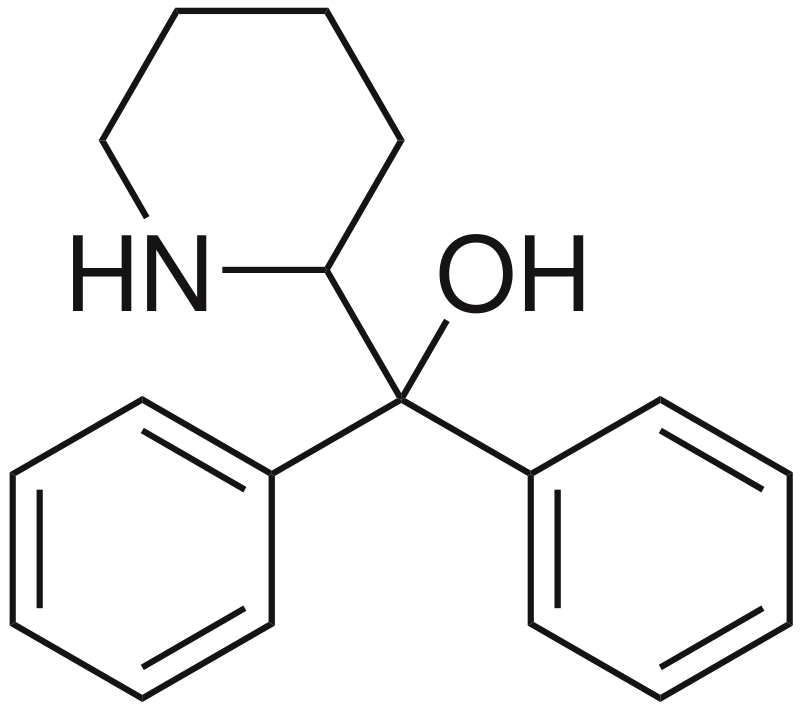Beautiful Plants For Your Interior
Summary
Pipradrol, known as Meratran, is a gentle central nervous system stimulant with norepinephrine-dopamine reuptake-inhibiting properties. It has fallen out of everyday use in many countries due to concerns about its potential abuse. However, Pipradrol continues to have limited utilization in certain European countries and the United States, though infrequently.
| Identifiers | |
|---|---|
| IUPAC name | |
| CAS Number | 467-60-7 |
|---|---|
| PubChem CID | 10083 |
| ChemSpider | 9681 |
| UNII | S6I030E0DA |
| CompTox Dashboard (EPA) | DTXSID2023486 |
| ECHA InfoCard | 100.006.723 |
| Chemical and physical data | |
| Formula | C18H21NO |
| Molar mass | 267.37 g·mol−1 |

History
Pipradrol, initially patented in 1949, was originally employed in treating obesity. Over time, its applications expanded to include managing conditions like narcolepsy and ADHD and, notably, alleviating symptoms associated with senile dementia, a use that endures today in medical practice. Pipradrol earned favour in these applications due to its comparatively mild stimulant properties, ensuring a commendable safety profile compared to more potent stimulants. It was also subject to research as an adjunct treatment for depression and schizophrenia, although its utilization for these purposes remained limited.
In the late 1970s, Pipradrol, like many other substances with a history of abuse, was prohibited in numerous countries. Despite its relatively mild stimulant effects, Pipradrol was categorized under the less restrictive drug classes, such as Class C in the United Kingdom and New Zealand. However, it was still deemed to possess the potential for misuse and was consequently classified as an illegal drug. Today, Pipradrol is a relatively obscure compound, rarely recognized as a substance of illicit abuse. Nevertheless, it continues to find some application in scientific research, often as a reference for comparing and testing other stimulants.
Legal status
| Legal status | |
|---|---|
| Legal status | AU: S4 (Prescription only) BR: Class B1 (Psychoactive drugs)[1] CA: Schedule IV DE: Anlage III (Special prescription form required) NZ: Class C UK: Class C US: Schedule IV UN: Psychotropic Schedule IV |
Dose
The recommended dosage of pipradrol typically falls within the range of 0.5 to 4 milligrams per day. It is commonly administered as a single morning dose due to pipradrol’s prolonged duration of effects, which can last up to 12 hours. Taking higher doses or consuming it late in the day can lead to issues with insomnia.
Side effects
Frequently encountered side effects encompass insomnia, reduced appetite, rapid heartbeat (tachycardia), and heightened anxiety. Less common side effects may encompass dry mouth, trembling, high blood pressure (hypertension), feelings of euphoria, episodes of depression, and exceptionally rare occurrences of psychosis or convulsions.
FAQ
1. What is Pipradrol?
- Pipradrol is a chemical compound known for its mild stimulant properties. It was initially developed for treating obesity and has been used for various medical purposes.
2. What were the initial medical uses of Pipradrol?
- Pipradrol was initially utilized in treating obesity but later found applications in managing conditions like narcolepsy ADHD, and addressing symptoms associated with senile dementia.
3. Is Pipradrol still used for medical purposes today?
- Yes, Pipradrol is still used in some medical contexts, primarily for managing symptoms of senile dementia. However, its use for conditions like obesity has declined over time.
4. What is the typical dosage of Pipradrol?
- The typical dosage of Pipradrol falls within the range of 0.5 to 4 milligrams per day. It is usually administered as a single morning dose due to its long-lasting effects, extending up to 12 hours.
5. What are the common side effects of Pipradrol?
- Common side effects of Pipradrol may include insomnia, reduced appetite, rapid heartbeat (tachycardia), and heightened anxiety.
6. Are there any less common side effects associated with Pipradrol use?
- Yes, less common side effects can include dry mouth, trembling (tremors), high blood pressure (hypertension), feelings of euphoria, episodes of depression, and, in sporadic cases, the development of psychosis or convulsions.
7. Why is Pipradrol no longer widely used in many countries?
- Pipradrol faced regulatory restrictions and became less common in many countries due to concerns about its potential for abuse.
8. Is Pipradrol known as an illicit drug of abuse today?
- Pipradrol is now an obscure compound and is virtually unknown as an illicit drug of abuse. However, it is still used for scientific research, often as a reference for testing other stimulants.
References
- Anvisa’s announcement, dated March 31, 2023, titled “RDC Nº 784 – Listas de Substâncias Entorpecentes, Psicotrópicas, Precursoras e Outras sob Controle Especial” [Collegiate Board Resolution No. 784 – Lists of Narcotic, Psychotropic, Precursor, and Other Substances under Special Control], is available in Brazilian Portuguese. This information was published in the Diário Oficial da União on April 4, 2023, and can be accessed in its archived form until August 3, 2023. The retrieval date for this information is August 16, 2023.
- Charles H. Tilford and Harold W. Werner were granted U.S. Patent 2,624,739 in 1953.
- Gelvin EP, McGavack TH, and Kenigsberg S conducted research in 1955 on “Alpha-(2-piperidyl) benzhydrol hydrochloride (pipradrol) as an adjunct in the dietary management of obesity.” Their findings were published in the “N Y State J Med,” Volume 55 (16), pages 2336–8. The research can be accessed via PMID 13244858.